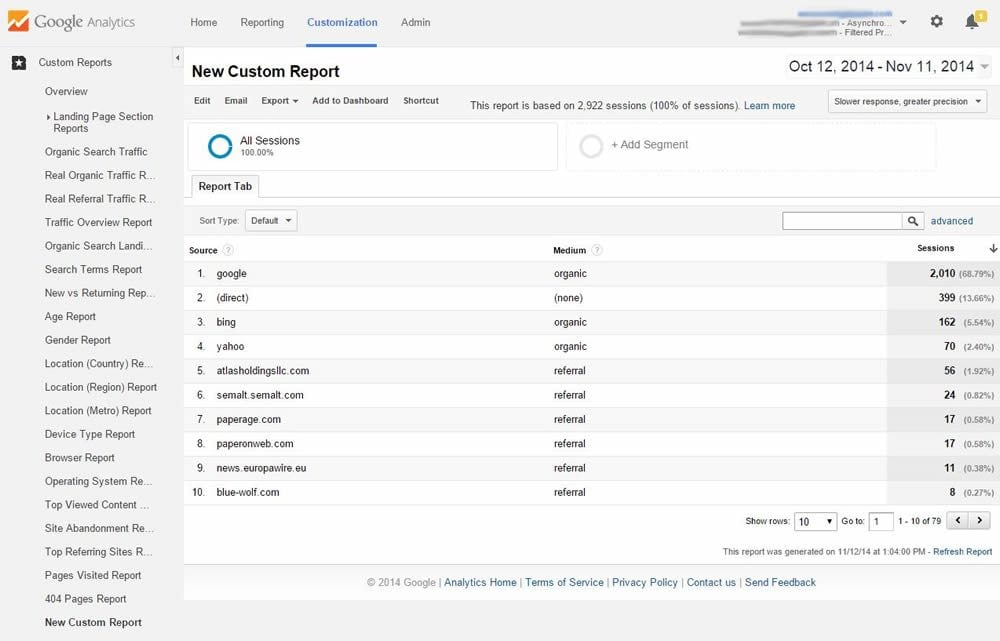Enhance Your Data Evaluation Utilizing Additional Measurement in Google Analytics
Exploring the abilities of additional measurements in Google Analytics opens up a world of possibilities for refining data analysis. The capability to dissect info additionally beyond the surface area level provides a nuanced sight that can shape tactical choices. By layering extra dimensions onto primary data collections, a more detailed narrative arises, dropping light on user interactions and performance signs. This vibrant technique to data examination holds the essential to opening covert patterns and patterns that can transform just how companies interpret their electronic impact.
Comprehending Additional Dimensions
In the world of information analysis, a critical facet to grasp is the idea of secondary measurements and their significance in extracting deeper insights from Google Analytics reports. Additional dimensions in Google Analytics refer to extra parameters that can be added to the primary measurement, enabling for an extra comprehensive evaluation of information. By including additional dimensions, analysts can segment and filter data to reveal patterns, trends, and connections that may not be obvious when considering the information as a whole. These second measurements can give context and a more comprehensive understanding of user habits, traffic sources, and various other key metrics tracked by Google Analytics.

Advantages of Making Use Of Secondary Dimensions
When examining information in Google Analytics, the usage of additional dimensions uses indispensable understandings right into individual actions and efficiency metrics. By adding a secondary measurement to your primary data, you can dig much deeper into the characteristics of your web site visitors and their communications.
Additionally, additional measurements assist in recognizing patterns and correlations that may not be right away apparent when taking a look at the data alone. This much deeper degree of evaluation can uncover valuable details that can lead marketing techniques, website optimization, and overall company decisions. Additionally, secondary dimensions improve the context of your main information, giving a more comprehensive sight of individual engagement and efficiency metrics. Generally, using second dimensions in Google Analytics can substantially improve the deepness and quality of your information analysis, bring about even more enlightened decision-making and boosted results.
How to Add Secondary Measurements
By incorporating additional measurements in visit this site right here Google Analytics, customers can acquire much deeper insights into their data evaluation process, enabling for even more detailed analysis of individual behavior and performance metrics. Adding additional measurements is an uncomplicated procedure that can considerably improve the deepness of analysis. Once in the report, find the "Additional measurement" tab over the information table.
Studying Information With Secondary Dimensions
Utilizing secondary dimensions in information evaluation provides a more extensive understanding of customer actions and efficiency metrics. By including a second measurement to your key information set in Google Analytics, you can delve much deeper into the qualities of your site visitors and their interactions. Integrating the primary measurement of 'source/medium' with the second dimension of 'landing page' can disclose which certain pages are drawing in traffic from various sources, aiding you optimize these web pages for much better engagement.

Essentially, examining data with second dimensions encourages you to obtain useful insights right into individual habits, identify fads, and make informed decisions to improve the efficiency of your digital buildings.
Best Practices for Secondary Dimensions
In information analysis, including second measurements successfully can considerably boost the deepness of understandings obtained from metrics and customer behavior patterns. When using second measurements in Google Analytics or any type of various other analytical tool, it is critical to stick to best practices to make certain the precision and importance of the data analysis.
One secret ideal method is to very carefully choose second dimensions that match the key measurement being analyzed. Picking secondary measurements that provide added context or further segmentation can use a much more comprehensive understanding of the data. It is additionally vital to avoid overcomplicating the analysis by including a lot of second dimensions, which may result in complication or dilution of understandings.
Furthermore, it is a good idea to try out different mixes of second and primary dimensions to reveal new visite site correlations and trends. Frequently fine-tuning the option and examining of additional measurements based on the details objectives of the evaluation can lead to even more actionable understandings. By following these finest techniques, data experts can take advantage of secondary measurements efficiently to enhance the general data analysis procedure and decision-making abilities.

Verdict
In verdict, including second dimensions in Google Analytics is necessary for a detailed data analysis technique. By leveraging additional measurements alongside main ones, analysts and marketing experts can discover beneficial understandings and relationships that can notify decision-making and optimize digital advertising and marketing approaches. Recognizing exactly how to efficiently use second measurements and adhering to best practices will permit experts to extract significant information and boost their overall efficiency metrics.
Additional dimensions in Google Analytics refer to extra criteria that can be added to the primary dimension, enabling for an extra detailed analysis of information. By including secondary dimensions, experts can section and filter information to discover patterns, trends, and relationships that might not be apparent her explanation when looking at the information as a whole. Incorporating the primary dimension of 'source/medium' with the additional measurement of 'landing page' can expose which details web pages are attracting web traffic from different sources, aiding you maximize these web pages for better involvement.
One secret ideal technique is to thoroughly choose second measurements that enhance the key dimension being examined. By complying with these finest techniques, data experts can take advantage of second dimensions effectively to boost the general information evaluation process and decision-making abilities.